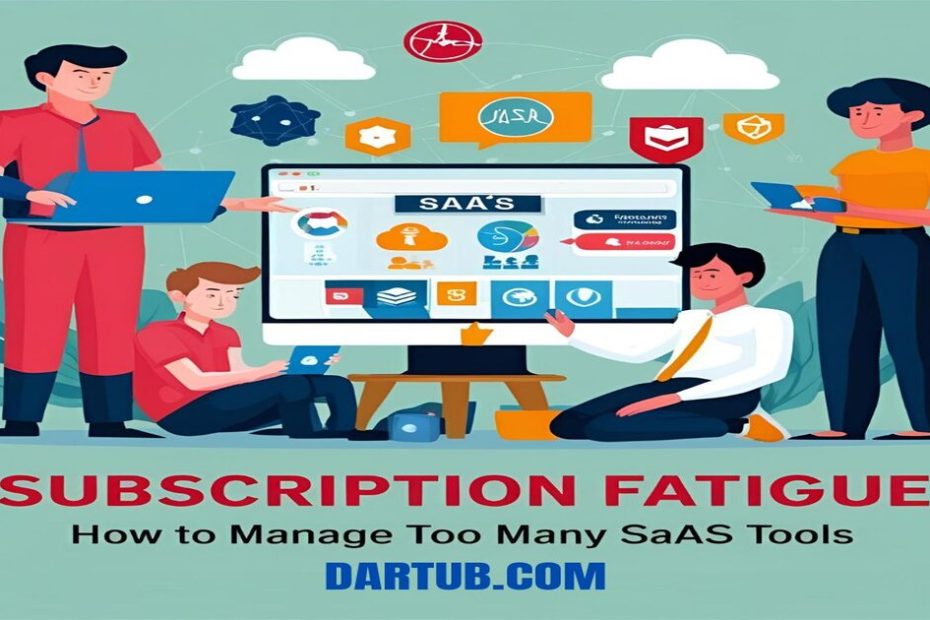Introduction
In today’s hyper-digital landscape, businesses and individuals rely heavily on Software as a Service (SaaS) tools to streamline operations, enhance productivity, and drive growth. However, as the number of subscriptions grows, so does a new challenge: subscription fatigue. This phenomenon, where users feel overwhelmed by the sheer volume of services they’re subscribed to, is becoming increasingly common in 2025.
In this comprehensive guide, we explore what subscription fatigue is, how it affects productivity and finances, and practical strategies to manage, optimize, and reduce SaaS overload.
Table of Contents
- What is Subscription Fatigue?
- Signs You’re Experiencing SaaS Overload
- The Real Cost of Too Many SaaS Tools
- Why Subscription Fatigue is Rising in 2025
- Effective Strategies to Manage SaaS Tools
- Tips to Prevent Future Subscription Fatigue
- Best SaaS Management Tools in 2025
- Final Thoughts
- Meta Description
- Target SEO Keywords
- Suggested Blog Tags
1. What is Subscription Fatigue?
Subscription fatigue refers to the mental and financial exhaustion users feel when juggling too many recurring software services. Whether it’s project management platforms, CRM systems, marketing automation tools, or cloud storage services, each tool adds complexity and cost.
Businesses, in an attempt to stay competitive, often sign up for multiple SaaS products, only to find that usage dwindles, team adoption drops, and ROI becomes murky.
2. Signs You’re Experiencing SaaS Overload
Recognizing the symptoms of SaaS overload is the first step to addressing it:
- You’re paying for tools you rarely or never use
- Your team complains about switching between platforms
- Multiple tools offer overlapping features
- Subscription costs keep rising with little to show for it
- Onboarding and training take up significant time
- Important data is siloed across different platforms
3. The Real Cost of Too Many SaaS Tools
Financial Costs
- Wasted Budget: Unused or underused subscriptions drain company finances.
- Hidden Fees: Overages, premium upgrades, and auto-renewals sneak up unnoticed.
Operational Costs
- Lower Productivity: Constant app-switching leads to context switching and loss of focus.
- Security Risks: More tools mean more potential vulnerabilities.
- Data Fragmentation: Inconsistent data across platforms can harm decision-making.
4. Why Subscription Fatigue is Rising in 2025
The SaaS market is expected to surpass $300 billion by 2025, with companies using an average of 110 SaaS applications. With remote work and digital transformation accelerating, organizations are quick to adopt solutions but slow to evaluate their long-term utility.
Key Drivers
- Remote work requires digital toolkits
- Department-specific solutions increase SaaS sprawl
- Lack of centralized procurement policies
- Easy sign-up models encourage impulsive purchases
5. Effective Strategies to Manage SaaS Tools
1. Conduct a SaaS Audit
Start by listing all tools currently in use. Include:
- Monthly and annual costs
- User access and usage rates
- Feature utilization
This audit helps identify which tools are essential, redundant, or obsolete.
2. Consolidate Redundant Tools
Find overlaps. If two platforms offer similar features (e.g., task management or file sharing), consider consolidating.
Example: Replace Trello and Asana with ClickUp or Monday.com.
3. Leverage All-in-One Platforms
Opt for comprehensive solutions that integrate multiple functionalities:
- Project Management + CRM: ClickUp
- Email Marketing + Sales: HubSpot
- File Storage + Collaboration: Google Workspace
4. Involve Teams in Tool Decisions
Empower users to provide feedback before purchasing a new SaaS product. It ensures better adoption and avoids buying tools no one wants.
5. Set Subscription Budgets
Define clear limits for software subscriptions by department. Use cost tracking dashboards to monitor spending in real time.
6. Use SaaS Management Platforms
Tools like Zluri, Cledara, G2 Track, or Torii help in:
- Tracking usage
- Monitoring costs
- Managing renewals
- Enhancing security
6. Tips to Prevent Future Subscription Fatigue
- Centralize Procurement: Assign a dedicated SaaS manager or procurement team.
- Use Free Trials Wisely: Test before you commit. Set calendar reminders for trial expiration.
- Cancel Unused Subscriptions Promptly: Don’t let legacy tools linger.
- Negotiate Annual Deals: Often cheaper and easier to manage than monthly plans.
- Regular Reviews: Schedule quarterly or bi-annual SaaS audits.
7. Best SaaS Management Tools in 2025
Here are some top-rated tools to help manage your SaaS stack:
1. Zluri
- Automated discovery of SaaS apps
- Real-time usage tracking
- License optimization
2. Cledara
- Centralized SaaS purchase management
- Budget control tools
- Compliance reporting
3. Torii
- Usage insights
- Renewal reminders
- Integration management
4. G2 Track
- Vendor management
- Contract visibility
- Expense tracking
8. Final Thoughts
SaaS is here to stay, but managing it effectively is the key to maximizing ROI and minimizing stress. Subscription fatigue isn’t just a budgeting issue – it’s a productivity, security, and strategy issue.
By auditing your tools, consolidating services, and investing in management platforms, you can regain control over your digital ecosystem and empower your team to work smarter in 2025.
